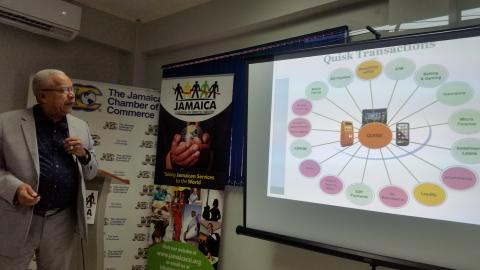
The world over is dealing with the issue of ageing populations where the number of persons over 55 is steadily increasing while the number of children born to families reduces.
More persons are deciding to have one child or, maximum, two. Jamaica’s birthrate, for example, is approximately 2.01 per family while people are living longer due to advances in technology and improved health services. Living longer, however, does not necessarily equate to living healthier or having a better quality of life. Healthcare will be forced to catch up to this phenomenon.
According to the World Factbook, as at 2018, 13.5 per cent of the population is aged older than 55 and this is expected to increase in the coming years. The total life expectancy is 73.7 years, 72.1 years for males and 75.4 years for females. When we look at this and then at our statistics where no communicable diseases are concerned, it is clear that steps need to be taken to address these issues.
NON-COMMUNICABLE ILLNESSES
According to the Jamaica Health and Lifestyle Survey 2017, the elderly had the highest prevalence of non-communicable illnesses, including depression, diabetes and hypertension, and were among the group with the lowest likelihood of engaging in physical activity. This will clearly result in a large chunk of the population with a significantly reduced general quality of life.
It is clear that specific interventions will be needed to address the healthcare needs of our ageing population. Health technology is poised to provide this solution. Sometime ago I spoke about the intelligent home concept which was one of the major displays at the Healthcare Information and Management Systems Society (HIMSS) conference a year ago. This is in summary the grouping of a number of, and various types of, technology that can be used to facilitate healthcare access and delivery in the home.
Though a very simple concept, the i-home is truly the future of connected healthcare with a personal touch. Existing technology, including those not generally considered health technology, is integrated to form an entire system of remote care management with access to a physician through telemedicine. There is a solution within that system for each member of the family facing different concerns.
Along with telemedicine, this concept could be used to provide the elderly with care for which they would not have to travel long distances or depend on a third party to get them in front of a physician and caregiver.
We are entering an era in which personalised medicine will be key to ensuring individual needs are fully met. This will require a combination of lifestyle and clinical data that can be easily extracted from a health information management system that is linked with remote care devices. This data analysis will be important to determine a specific and personalised healthcare pathway for each patient. Persons who are plagued with communicable diseases, especially those affected by more than one, will need this type of specialised care.
All aspects of healthcare can be accommodated in this era of fast developing technology. The elderly, for example, will need medication management services, especially if they are not able to leave home due to illness. Also, if every other aspect is made convenient, it would be remiss to ignore the importance of easily ordering and receiving medication.
Several enterprises have been developed in recent times to fill this gap. Pillpack, which is an Amazon company, is one such. Pillpack sorts, coordinates, schedules and delivers medication. A few years ago this would have been difficult for us to do because online payment could only be made by credit card, which is not accessible to more than 75 per cent of the population. Now that we have mobile money solutions, such as Quisk, it can be easily achieved.
Importantly, while we make full use of the technology, we must also focus on helping persons to get over their technophobia, or fear of technology. Generally, the 50-65 age cohort or older are not as crafty with technology as their younger counterparts. If we plan to successfully use technology to manage their health we must also assist them through understanding this and becoming comfortable using it.
Doug Halsall is chairman and CEO of Advanced Integrated Systems doug.halsall@gmail.com
Published: Sunday | October 20, 2019 | 1:39 AM Doug Halsall
http://jamaica-gleaner.com/article/news/20191020/health-tech-technology-and-services-aged

